With its vibrant colors and heady fragrance, the hyacinth or Hyacinthus is a delightful presence in any springtime garden. But did you know you can also grow it indoors to great effect? In this easy guide for beginners, we’ll explore the most popular types of hyacinth flowers and show you how to grow and care for these garden delights.
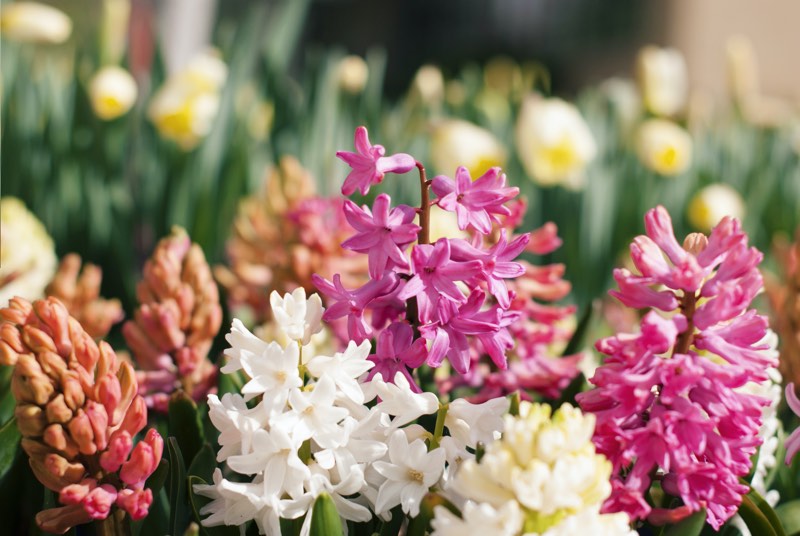
This fragrant perennial comes in around 30 varieties, giving both beginner and seasoned growers a swathe of colors to choose from.
Whether you’ve just discovered hyacinths or are a long-standing fan of the species, these plants won’t give you much trouble.
You can grow them in different ways and caring for them doesn’t feel like work. But you do need to bring your patience along. Read on to understand what we mean!
The Meaning of the Hyacinth
According to Greek legend, the origins of the hyacinth can be traced to the beautiful Spartan youth Hyakinthos. The sun god Apollo, and Zephyr, the god of the west wind, were both in love with him and competed for his affection.
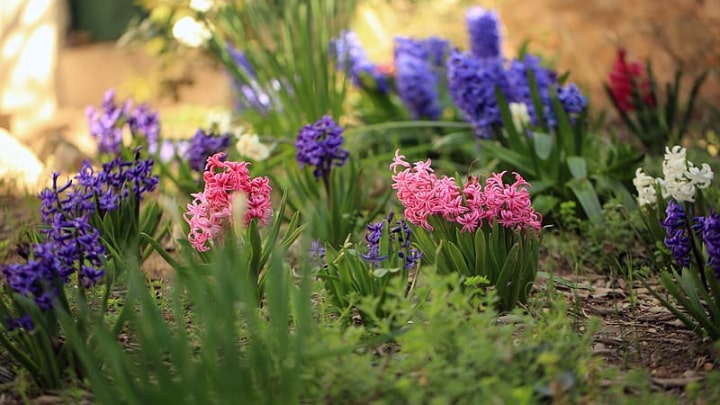
One day, Apollo was teaching Hyakinthos how to throw a discus when Zephyr, in a jealous fit, blew a gust of wind at his rival, which sent the discus hurtling toward Hyakinthos, striking him in the head and killing him.
From the blood of the killed youth, a flower sprang, and Apollo named it Hyacinthus or Hyacinth, in memory of his lover.
Ever since, the flower has symbolized forgiveness, deep regret, rashness, but also sport and play.
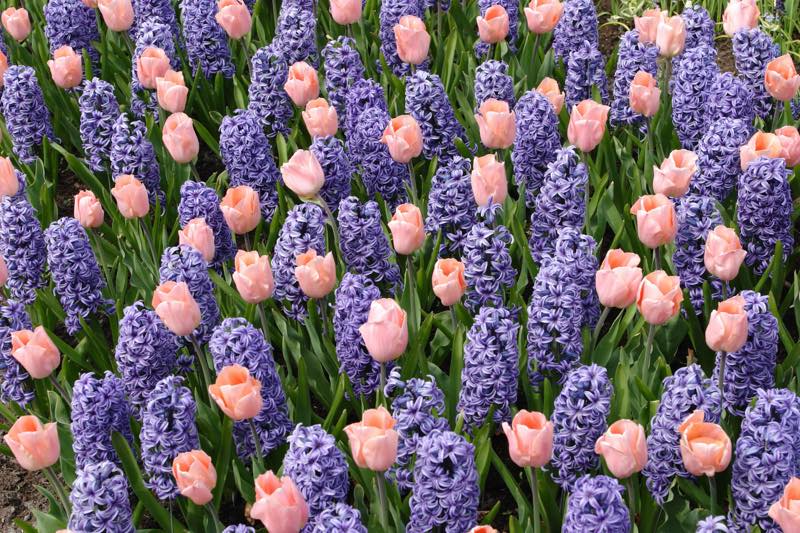
Ultimately, the exact meaning of the flower varies depending on its color.
- Purple conveys deep regret or sorrow for a wrong committed.
- White symbolizes loveliness and a prayer for someone.
- Yellow symbolizes jealousy.
- Red stands for play and recreation.
- Blue symbolizes sincerity.
Growing Hyacinths from Seed: What You Need to Know
The hyacinth is a bulbous plant, so the standard way to propagate it is to divide little bulbs from the main bulb and plant them individually.
But you can grow the plant from seed, too. And you don’t have to be a plant expert to pull that off. You just need good seeds.
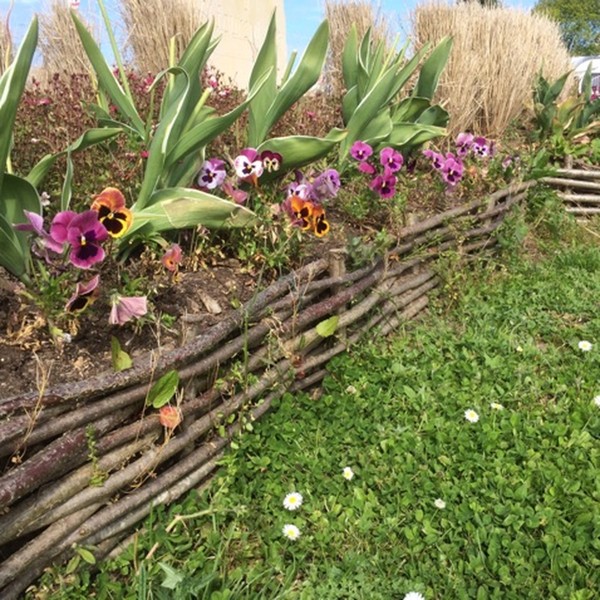
Before you start, you should know that growing hyacinths from seed is an exercise in patience. You can’t rush the process.
You have to wait for the hyacinth seeds to mature on the plant or, in other words, leave a few faded blooms to develop seed pods. No cutting!
Good to know: Hyacinths grown from seeds revert to the qualities of parent plants. If you want to grow the same variety of hyacinths as the one you already have, it’s best to grow it from bulblets.
So, how exactly can you grow them from seed?
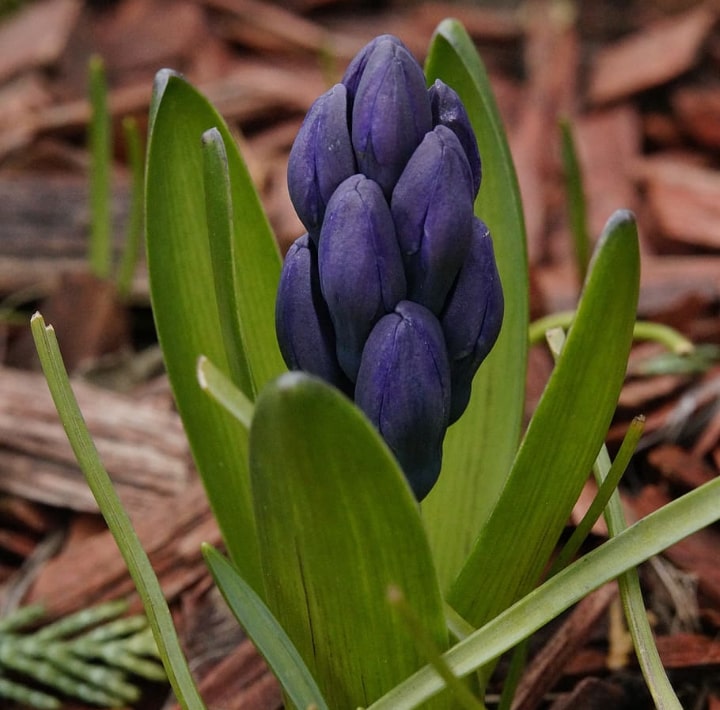
How to Grow Hyacinth from Seed the Easy Way
Follow the next steps carefully to grow healthy and beautiful flowers. Don’t skip any of them or you may get mixed results.
Step 1 – Gather the Seeds
When the seed heads turn a tan color and open, wrap nylon pantyhose or a similar lightweight material to catch the seeds.
Step 2 – Prepare the Seeds
Next, leave the seeds to dry and then soak them in lukewarm water for 48 hours. Make sure the container or bowl you soak them in is clean.
Step 3 – Get the Seed Tray Ready
Get some peat and perlite for the seed tray mix and plant the seeds carefully in the tray. Place it in your greenhouse or a cold frame, fertilizing it monthly..
Step 4 – Be Patient
In the first year, the hyacinth will develop a bulb and a few leaves. It may take two years or more before a hyacinth grown from seed will develop a flower. Talking about patience!
Hyacinth Care Tips
Whether you grow your hyacinths outdoors or indoors, you’ll find that these flowers are much less demanding than, say, orchids.
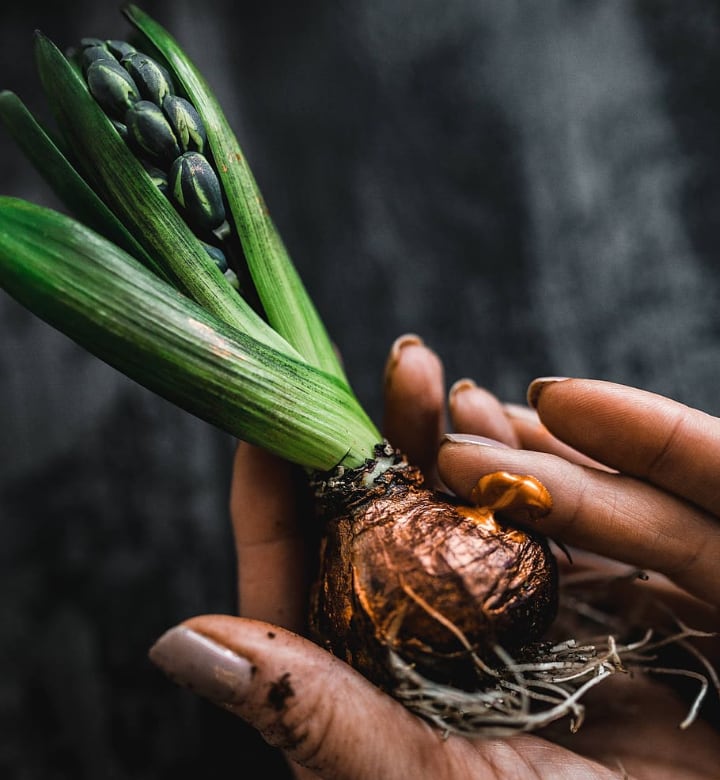
All you have to do is avoid a few crucial mistakes and ensure that you don’t overwater or overfertilize them.
Keep reading to find out all the essential tips you need to grow beautiful and fragrant flowers.
Soil
Hyacinths don’t like wet soil, nor do they thrive in richly organic soils. Ensure optimal growing conditions for your hyacinths by choosing a neutral or slightly acidic soil and providing good drainage.
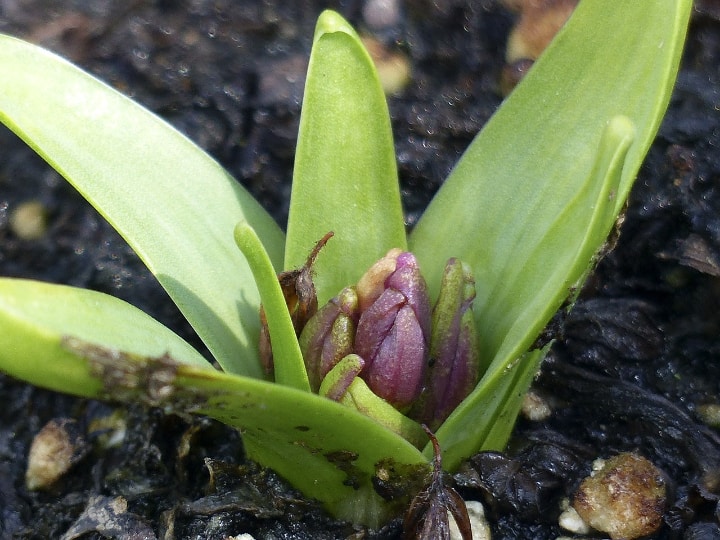
Don’t have a soil test kit at home? No problem.
- To test your soil’s acidity, collect a bit of soil in a cup.
- Put two spoonfuls in a glass and add some distilled water until the soil gets muddy.
- Then add half a cup of baking soda—if it fizzes, you have acidic soil. If not, it may be neutral or alkaline.
- Put two more spoonfuls of earth into another glass and add half a cup of white vinegar. Fizz means alkaline, no fizz means neutral!
Tip: When planting bulbs, use gloves because they can irritate the skin.
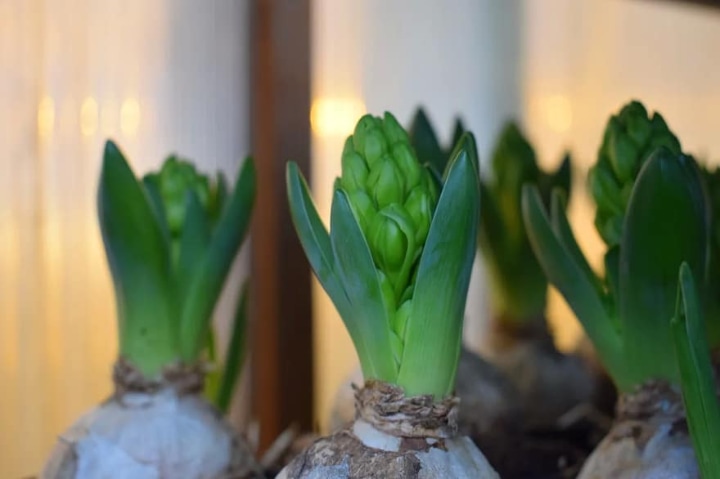
You can read more about soil in our soil types guide. You’ll also find there instructions for testing your soil.
Light
Hyacinths like full sun in spring and partial shade in summer. If you have deciduous trees in the garden, don’t worry too much about the shade.
They usually bloom in early to mid-spring, before the trees become leafy enough to claim all the light for themselves.
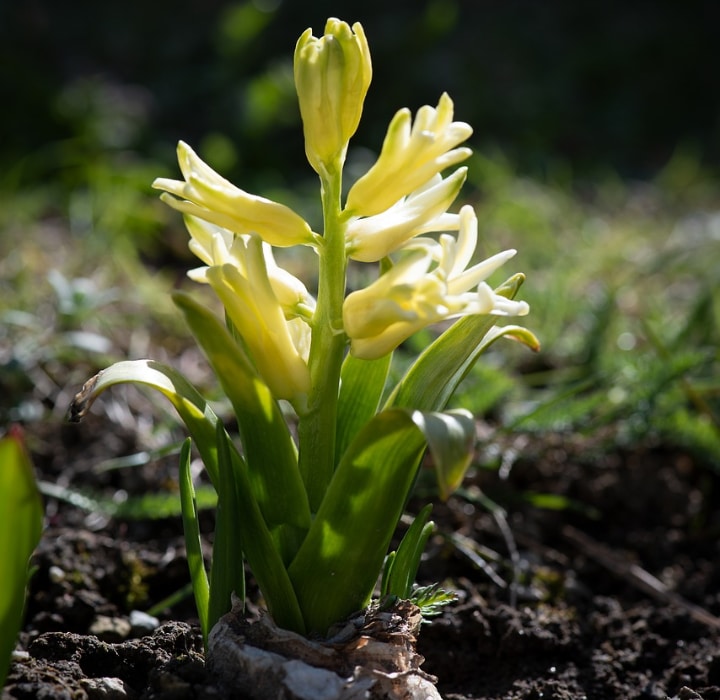
That said, some varieties of the flower grow best in partial to full shade, so make sure to check placement instructions for your specific plant just in case.
Important: When growing a hyacinth indoors, make sure it gets plenty of light. In other words, keep it by the window in the right pot.
Potting and Repotting Hyacinths
When first potting a hyacinth, start the bulbs in small containers and move them to a pot or vase once the plant puts out leaves.
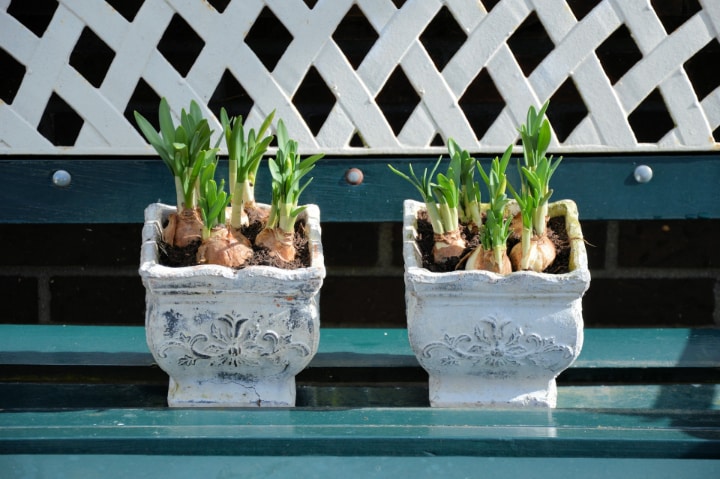
Use a loose potting mix that allows the water to drain easily. Also, choose a pot with good drainage—indoor hyacinths are prone to rotting if overwatered.
To prolong the bloom, use a liquid blooming fertilizer, but otherwise, note that when grown indoors, this flower doesn’t need much fertilizer.
Good to know: Before potting or repotting, keep in mind that hyacinth bulbs tend to live only around 3 or 4 years.
Hyacinths grown indoors need repotting around every 3 years or so. When moving a flower to another pot, it’s crucial to wait for the plant to become dormant, which occurs around 8 to 12 weeks after blooming.
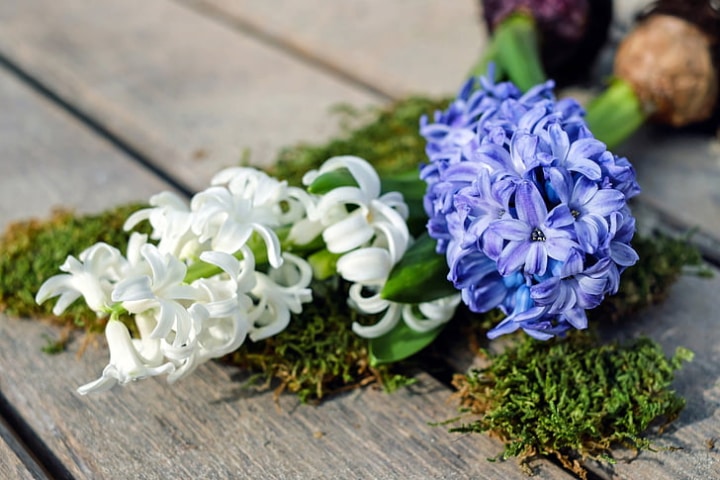
Here are the key steps you should follow.
- Use a garden clipper to prune off all the foliage and carefully remove the bulb.
- Wipe the bulb with a clean rag or paper towel.
- Look for bulblets and snap these off the mother plant—you can grow new plants from them.
- Plant the bulbs with the tip up at around 6” into the soil.
- Fill the container with water and let it drain through the holes. Job done!
Temperature
Hyacinths are cold-hardy flowers, so you don’t have to worry about the frost. Large-flowered ones, in particular, take the cold very well—they can survive up to around -25°F (-32°C).
Good to know: Indoors, bulbs planted in late summer or early fall need about 10 weeks of colder temperatures–around 40°F (4°C)–to flower.
Keep in mind that hyacinths planted outdoors also need the cold to bloom.
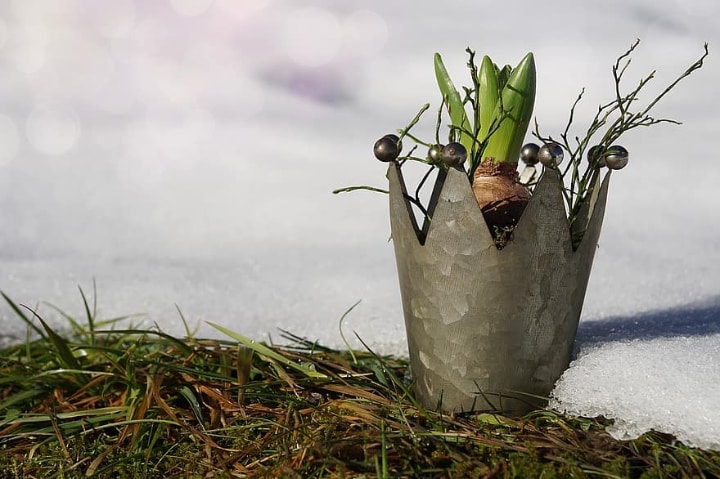
If you live a warm area where the ground doesn’t chill during winter, you may want to dig up the bulbs and chill them below freezing before replanting them in spring.
Watering
Like most plants, hyacinths like to be watered immediately after being planted. But it’s best to let the soil dry between watering to prevent the bulbs from rotting.
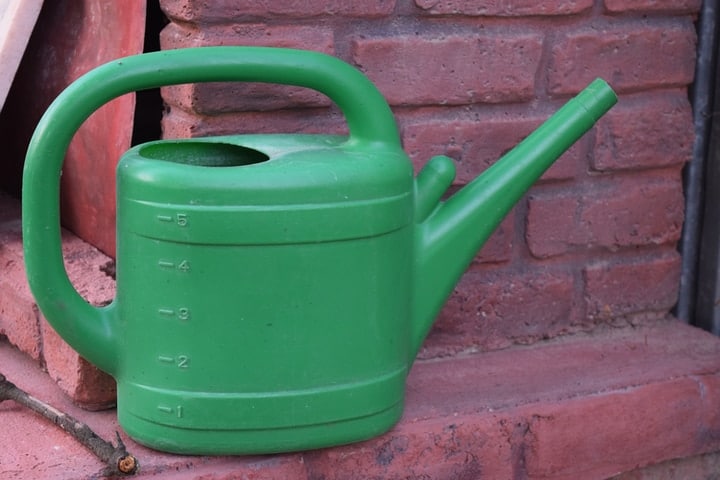
Important: Avoiding overwatering is one of the single most important tips you need to remember. These plants just don’t like mushy ground!
But if you’re experiencing a dry fall, keep watering then into winter. As a general rule, pay attention to how the plant looks.
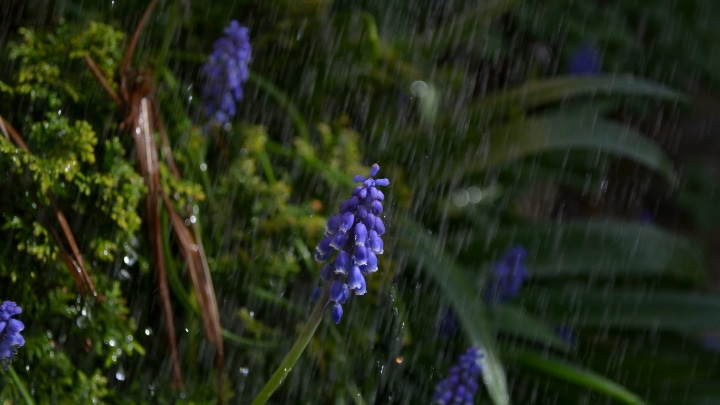
Yellowing and browning of the stem is usually a sure sign that your plant has too much water.
Fertilizer
Fertilize your Hyacinthus with rich compost in spring to help new growth. In the fall, use a balanced organic fertilizer for established plants.
When planting new bulbs, make sure to add bone mean or any balanced bulb fertilizer into the hole.
These plants are not very pretentious about their fertilizer. But it’s worth repeating that they don’t like to be overfertilized.
Grow a Hyacinth in Water
Wait a moment—didn’t we just say that hyacinths need soil with good drainage? That’s true.
But it’s also true that you can grow them in water. You’ll need a special vase for this, one that’s shaped like an hourglass. A standard vase won’t do!
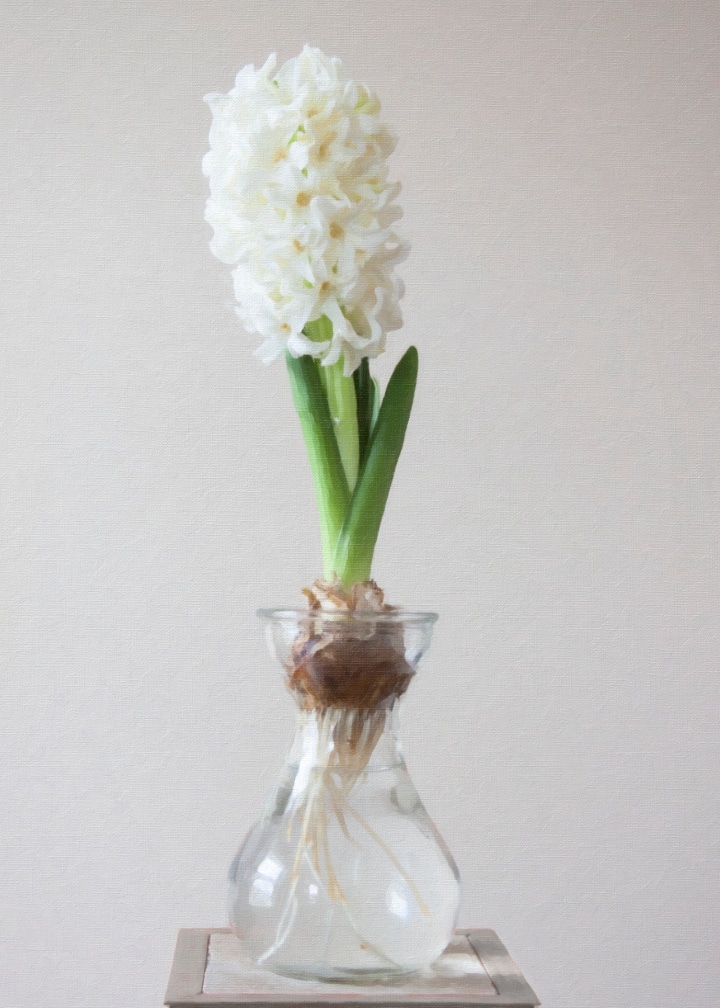
You can buy chilled bulbs or use normal bulbs. For normal bulbs, keep them in the crisper tray of your refrigerator for 4 to 6 weeks to trigger the growing process that the flowers experience in winter.
You can then follow the next steps.
- Put some charcoal at the bottom of the vase and half-fill the lower portion of the vase with water. The bottom of the bulb should not touch the water, just be a few millimeters over it!
- Place the vase in a cool, dark place such as the pantry or a cupboard.
- After around 12 weeks, the bulb will shoot. By then it will have also put out roots.
- Move the vase to a room with a constant temperature between 59-68°F (15-20°C) and wait for it to bloom.
Tip: Don’t put the vase close to a source of heat and avoid exposure to harsh sunlight. Accustom your water-hyacinth to the light gradually.
You can also buy live plants for your pond or water feature.
Best Hyacinth Varieties
The main species of the plant is the Hyacinthus orientalis, which is also known as common, garden, or Dutch hyacinth.
There is some debate as to whether H. litwinovii and H. transcaspicus are true hyacinths.
Most varieties of the flower cultivated in the West hail from H. orientalis, so let’s take a closer look at the varieties within this species.
Red Hyacinths
Jan Bos
Growing up to 4” tall, this reddish to dark pink variety is noted for its strong and pleasant fragrance. Blooms appear in mid-spring and last for a few weeks.
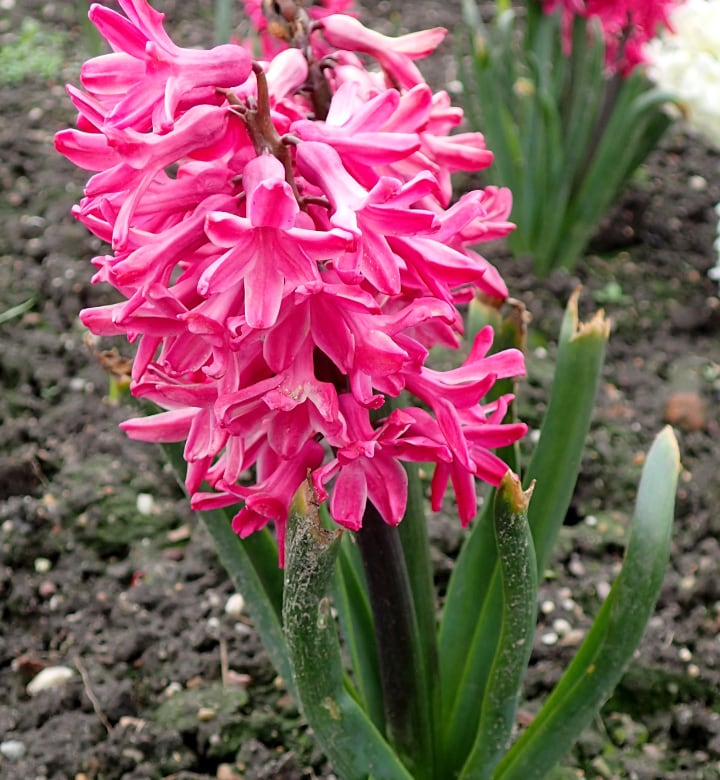
Tubergen’s Scarlet
Almost vermillion in color, Tubergen’s Scarlet is a small flower that is bound to attract attention wherever you plant it.
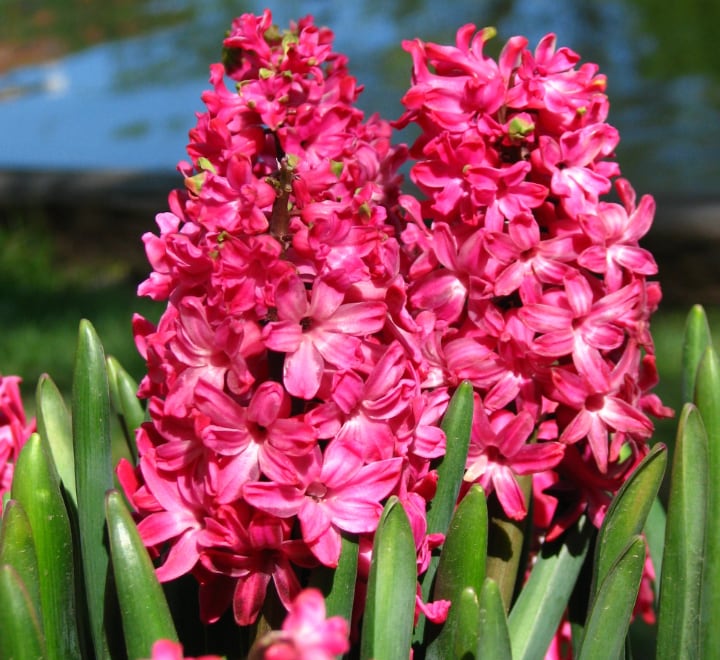
Pink Hyacinths
Pink Surprise
Pink Surprise wears dark green leaves and soft petals and spreads a sweet aroma. It looks great in a pot and even better in a rock garden.
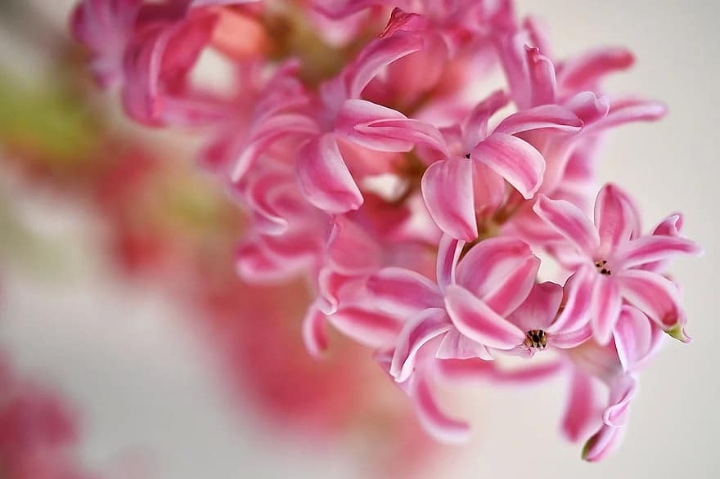
Anna Marie
The Anna Marie Hyacinthus varies in color. The young blossoms are light pink, but the petals turn salmon pink as they mature. The flower’s enticing scent will enchant you.
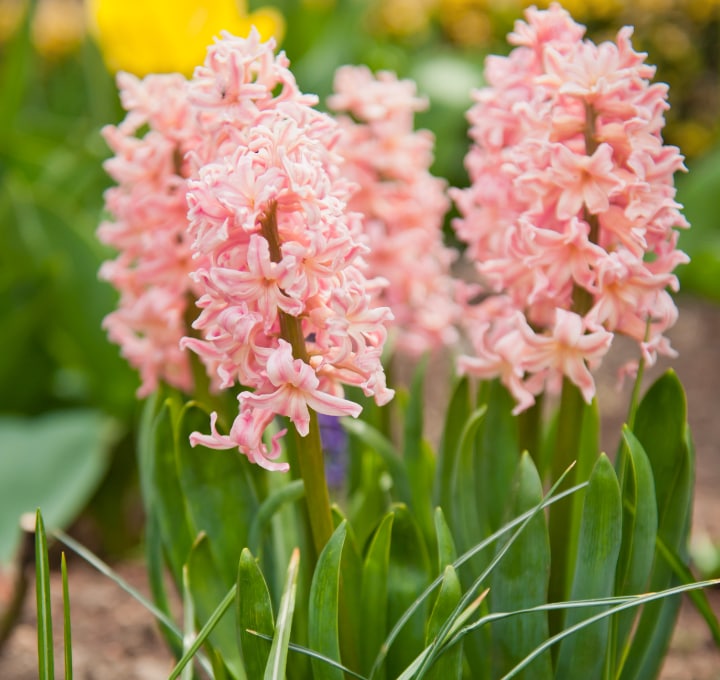
Lady Derby
The Lady Derby hyacinth has pale rose petals and bright green stems. It’s sturdy as far as this plant goes, and you shouldn’t have too much trouble naturalizing it given adequate environmental conditions.
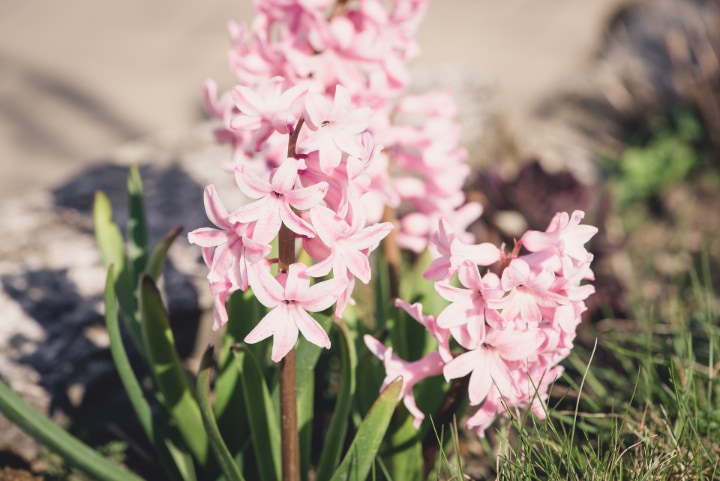
Hollyhock
This one has reddish-pink flowers in a double arrangement that makes it easy to spot in any garden. It has a strong, pleasant aroma that can awake almost any nose from its slumber.
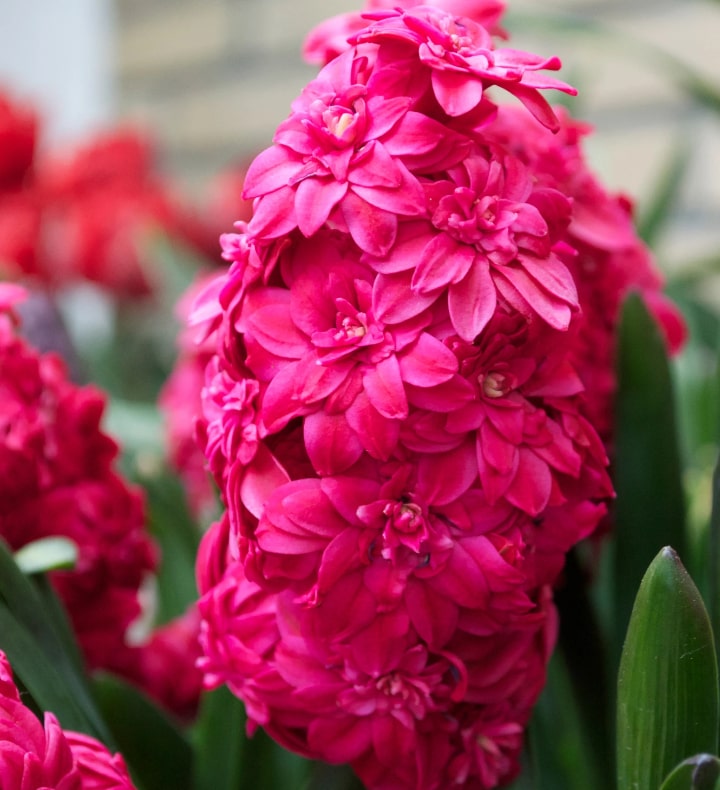
Gipsy Queen
The petals of the Gipsy Queen hyacinth come in a soft coral color that separates it from other pink varieties.
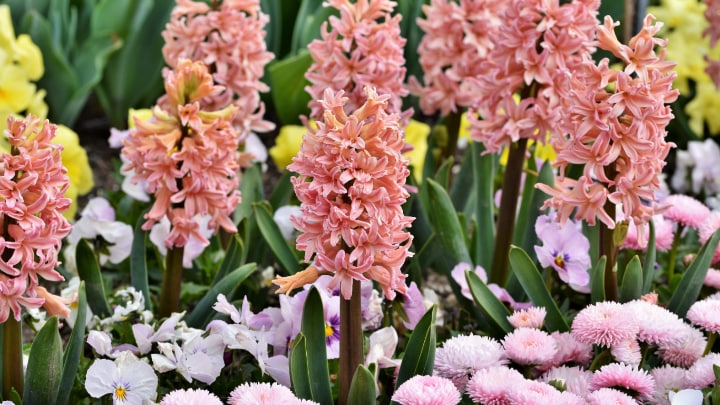
Fact: It’s resistant to rabbits. Not that you have rabbits in your garden, right? Rest assured rabbits won’t make them their food!
Pink Pearl
The Pink Pearl has purple-pink petals with the pink more pronounced around the edges—still, we thought it best to add it to pink hyacinths rather than purple ones given its name.
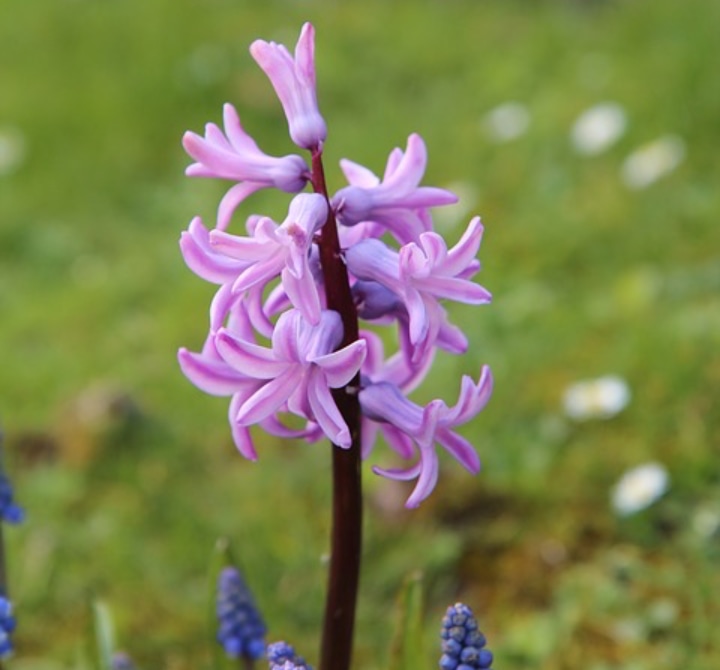
Wonderfully fragrant, it’s best to plant it in a spot by which you pass often.
Purple Hyacinths
Woodstock
The Woodstock hyacinth creates a stunning contrast between its bright green leaves and purple to dark plum flowers.
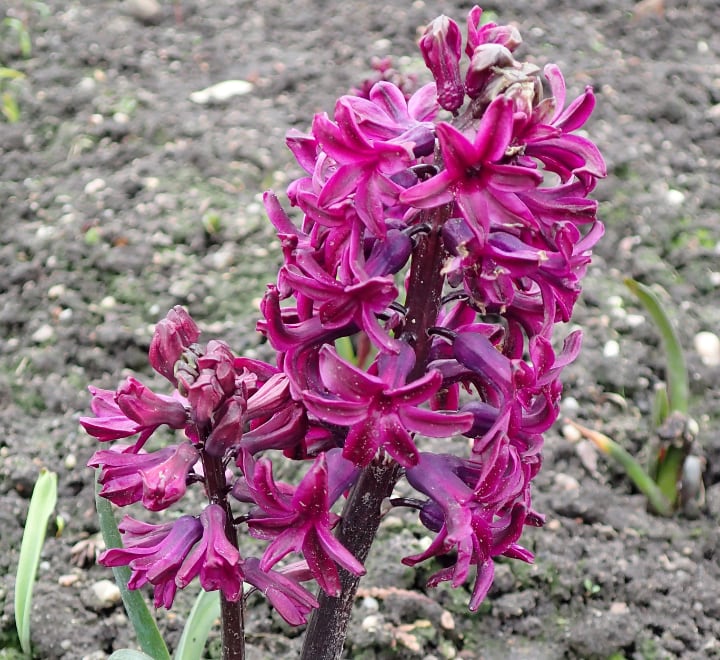
And it’s not just the color that makes this plant a welcome addition to your garden—you’ll love its scent, too! This variety of the H. orientalis is great for pathways.
Splendid Cornelia
With its rich fragrance and lance-shaped flowers, this pale purple flower can strike a fine chord with any flower lover. It’s not too demanding, either—just ensure adequate drainage after planting it.
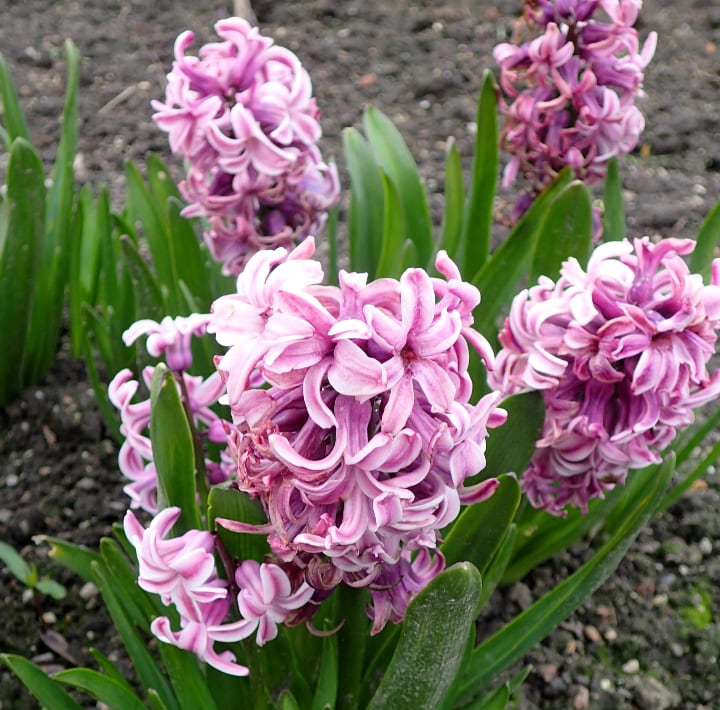
Purple Sensation
This one truly deserves its name. You’ll fall for its deep amethyst petals and dazzling fragrance. It’s a relatively small variety, growing up to 3-4” tall.
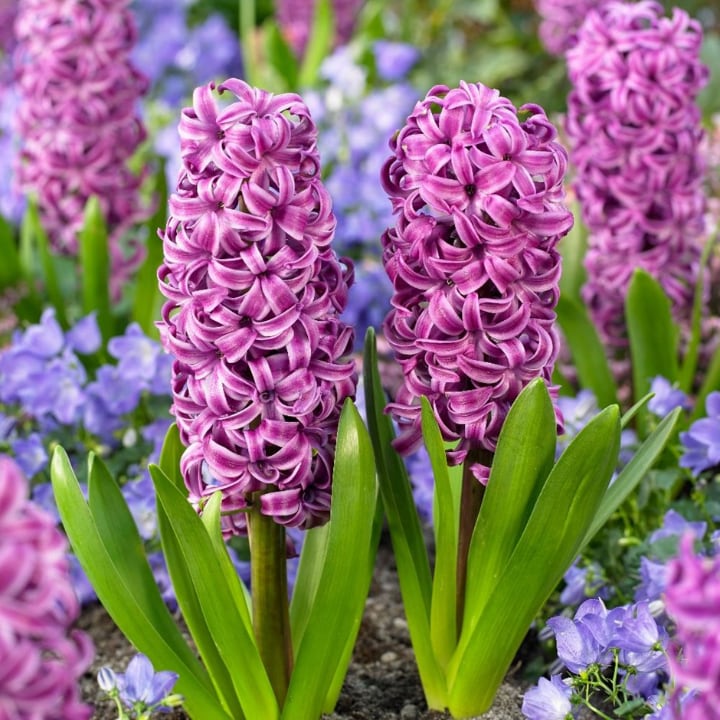
White Hyacinths
Top White
This variety has snow-white petals and a sweet, enchanting fragrance that will make you want to pass by it over and over again.
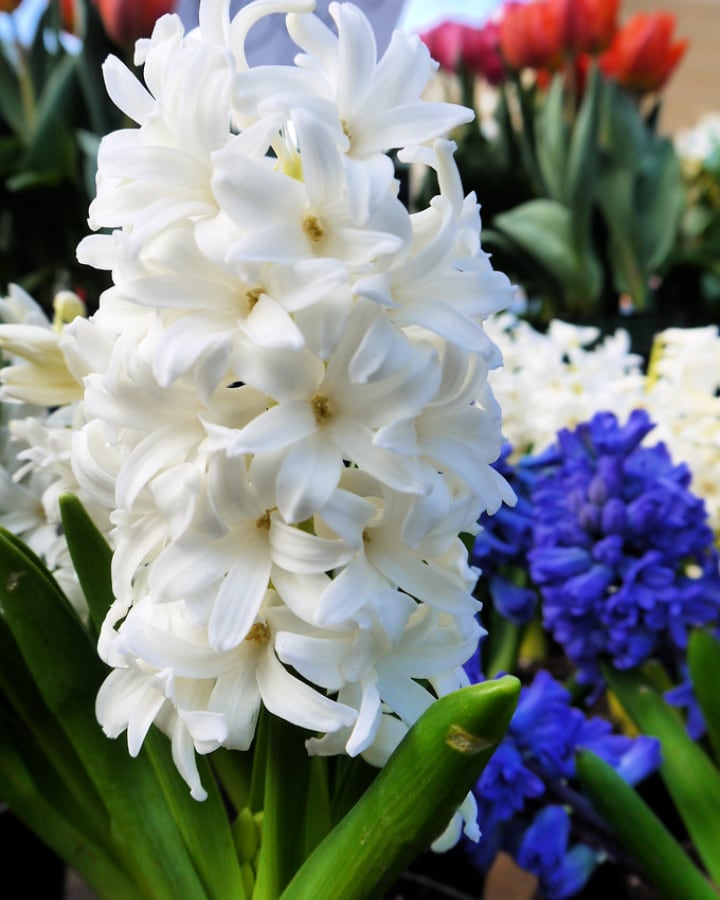
Tip: Top White hyacinths prefer full to partial shade, making them great for planting near patios.
White Festival
White Festival produces up to six flower clusters per bulb, more than most other varieties. The effect is rich—a treat for the eye and a delight for the nose.
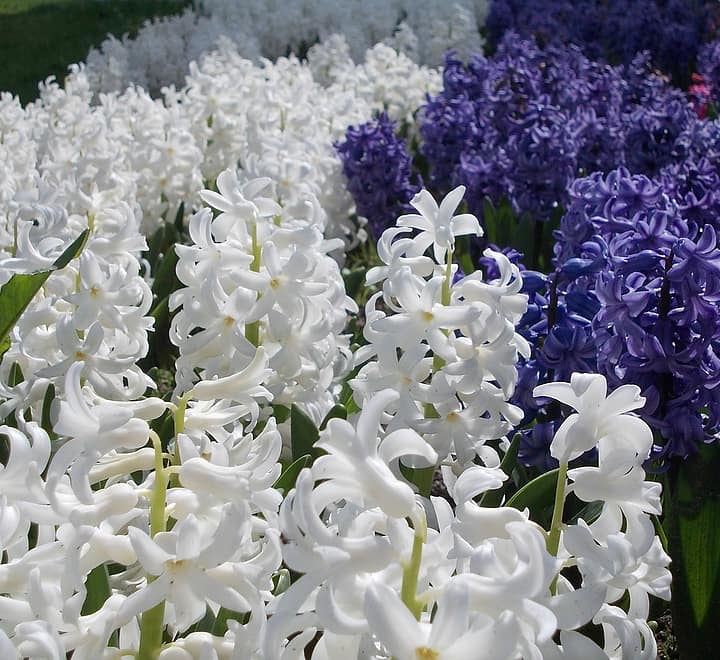
This one likes its soil a bit more wet than other hyacinths, but you have to avoid overwatering it to prevent rotting.
Carnegie
The Carnegie blooms in spring. It has deep green leaves and very white flowers, which on bright days may look as if they’re burning with light.
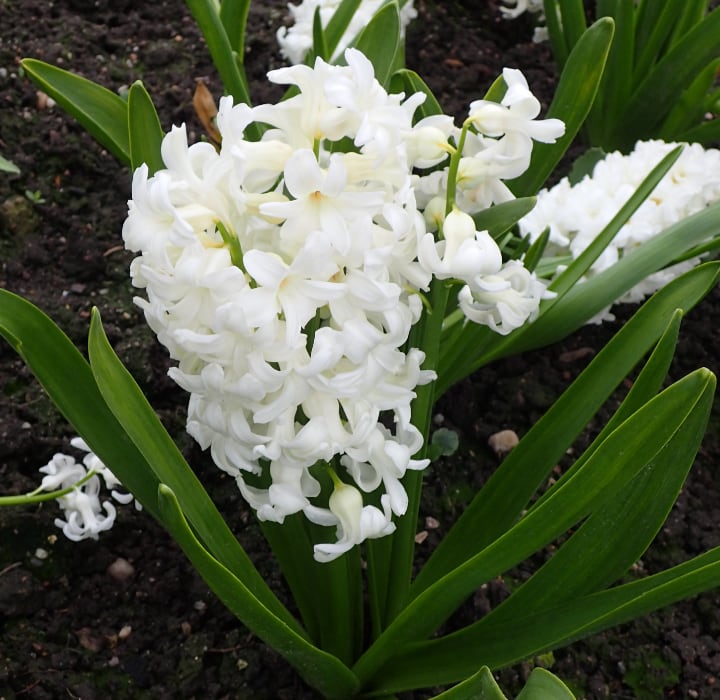
Aiolos
With its starry blossoms and bright white spikes, the Aiolos is one of the most beautiful white varieties you’ll come across.
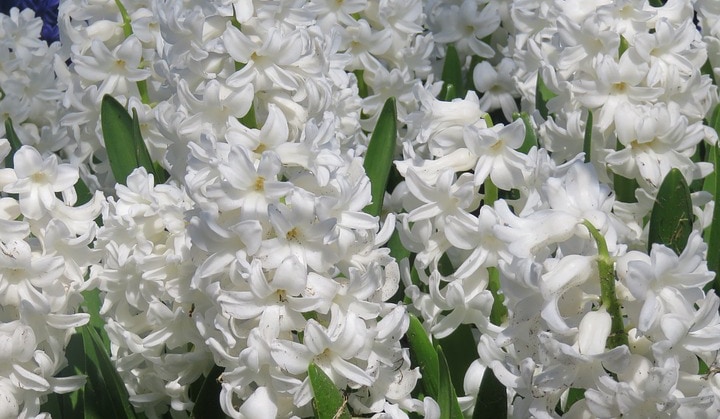
It has a great scent and may grow up to 12” tall, which is more than other varieties.
Yellow Hyacinth
City of Haarlem
This variety features pale yellow petals and glossy leaves—if you’ve grown primroses, you’ll find that it comes close to them in color.
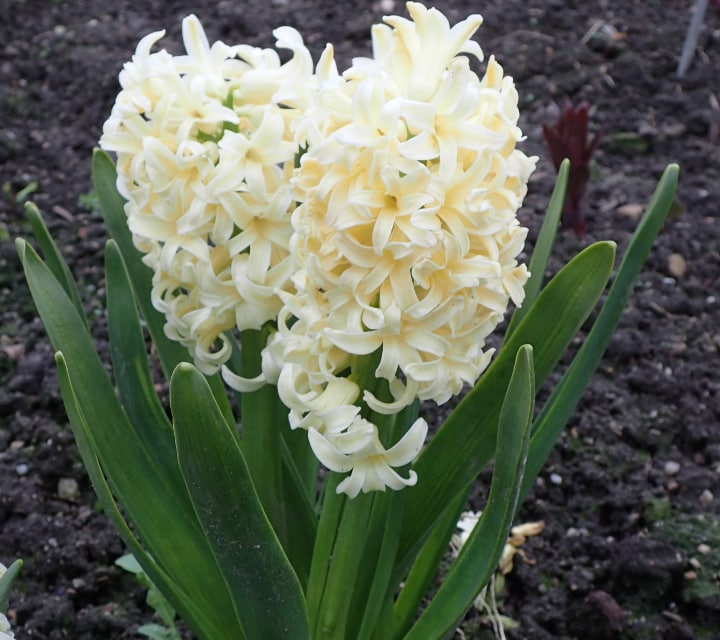
Blue Hyacinths
Delft Blue
With its soft blue hues and lance-shaped stems, the Delft Blue .looks special. Not only that, but it has a memorable scent, too.
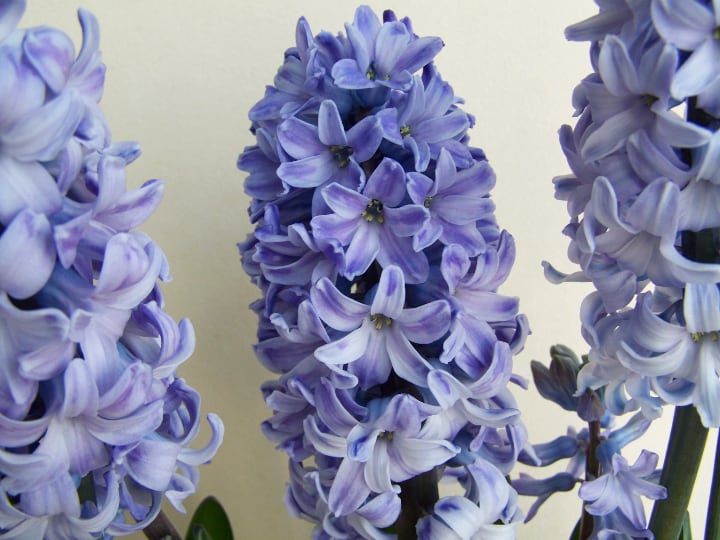
Blue Jacket
Pay close attention to the flowers of a Blue Jacket and you’ll notice a dark purple stripe running on the deep blue petals. It’s this variety’s distinguishing feature.
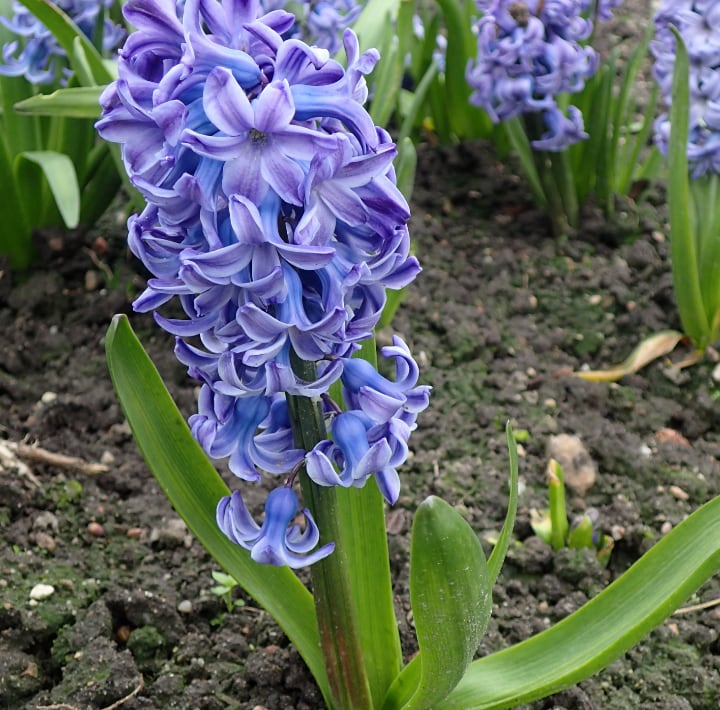
Blue Festival
The three best reasons to choose a Blue Festival hyacinth are—wonderful fragrance, intense blue-to-purple flowers, and generally unpretentious nature. Take our word for it: it’s one of the easiest ones to grow.
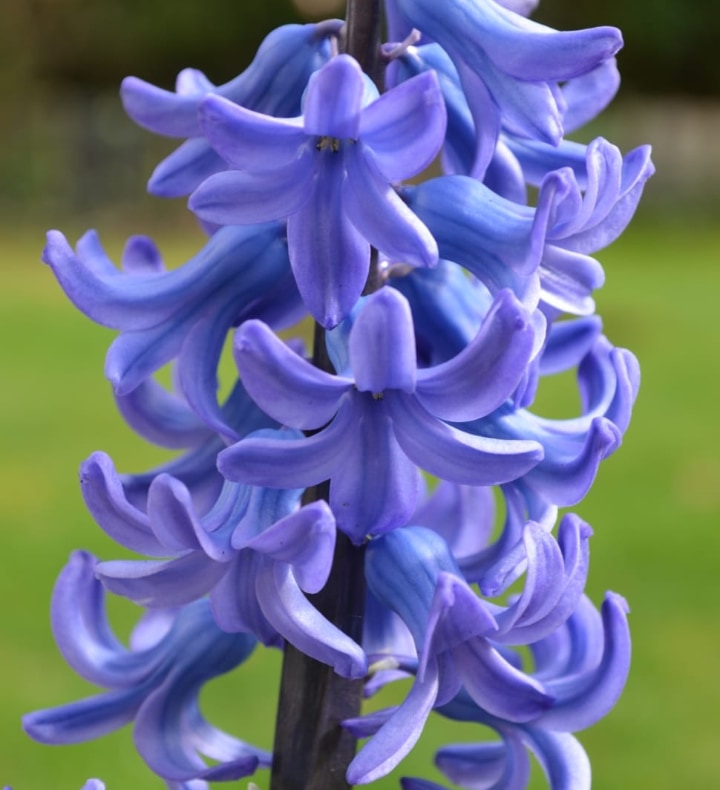
Violet Hyacinth
Miss Saigon
Bright green leaves and rich violet petals make this star-shaped flower a special presence in any garden.
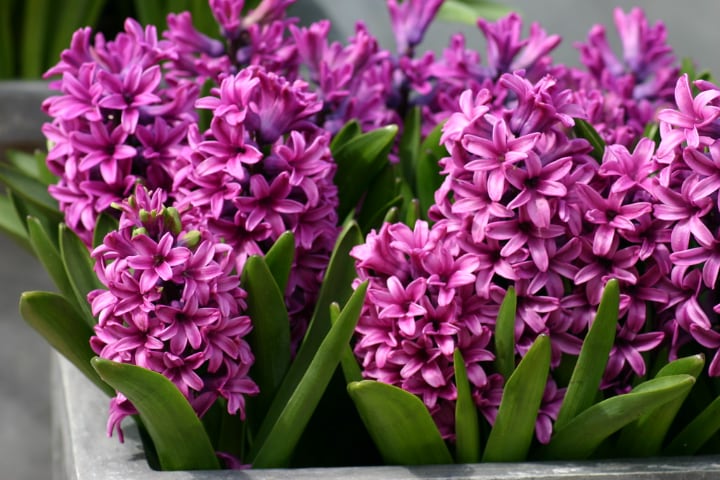
Tip: To ensure it grows healthy, plant it in a spot where it gets partial shade.
Hyacinth FAQ
Do hyacinths return every year?
They do! Hyacinths are perennial plants, meaning that the flower will come back next flowering season. But keep in mind that, after the first season, they may become smaller and carry fewer flowers.
They need the winter chill to spring back to life—if you experience a mild winter, you may have to dig the blooms out of the ground and chill them in a bag in the fridge for 4 weeks.
Do hyacinths spread?
Yes, but you need to help them. Around 10 weeks after blooming, hyacinths enter dormancy. That’s when you should dig them up and remove the bulblets around the mother bulb. Plant them in a different spot to spread the plant.
What do I do with hyacinth bulbs after flowering?
After cutting down the stalks and letting the leaves wither, you can dig up the mother bulb and remove the offshoots to spread the flower.
You may also have to dig up the bulbs and chill them if the ground doesn’t get cold enough during winter—the flower needs the chill to bloom again next year.
How long do hyacinths last?
Hyacinth flowers last about 2 weeks. Outdoor varieties can bloom every spring for many years with proper care. Learn how to grow them now.
And from the Blood of Hyacinthus a Flower Sprang…
Dainty, fragrant, and uncomplicated, the hyacinth isn’t just a flirt like some other flowers may seem to be, but a dependable perennial.
It can enrich your garden walk and make spending time on your deck or patio in spring heaven on earth.
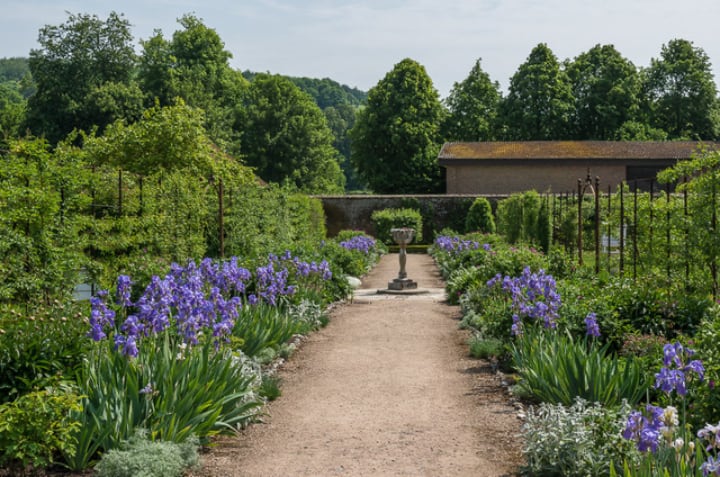
Whether you choose to grow these plants outdoors or indoors, you have many varieties to choose from.
You can combine them with tulips, daffodils, and other flowers you may already grow in your garden.
At the end of the day, the hyacinth is a flower worthy to stir a rivalry between the gods…
We hope you enjoyed this post and that it answered all your questions. Share it on social media to help us spread the word about this wonderful little plant!

Leave a Reply